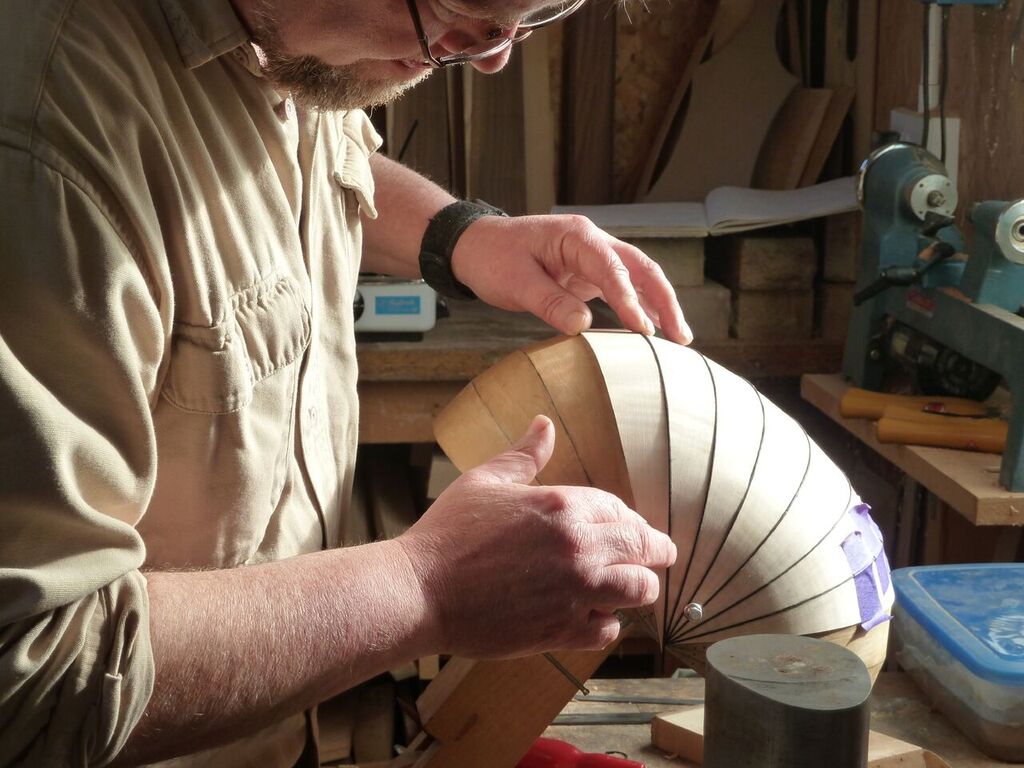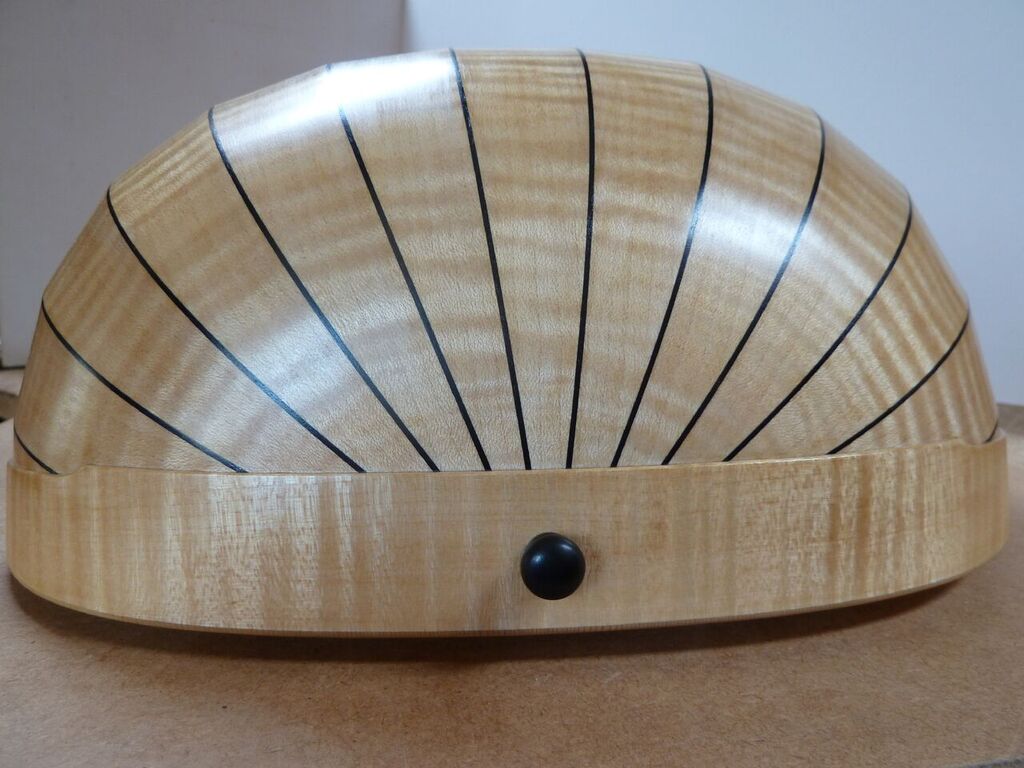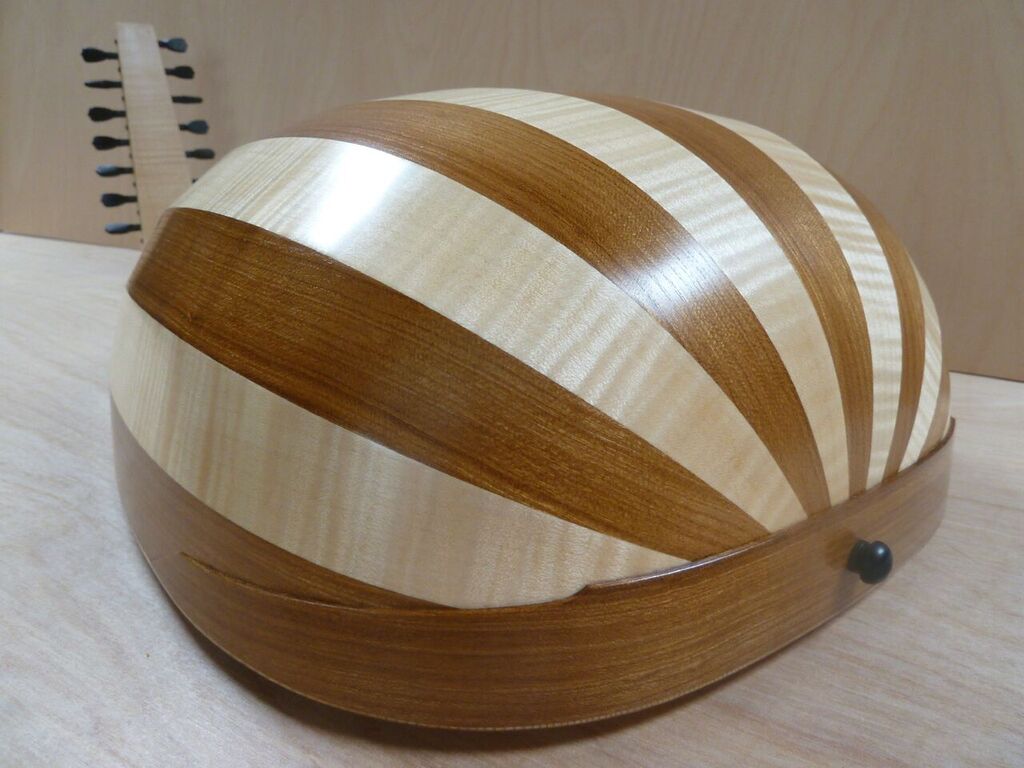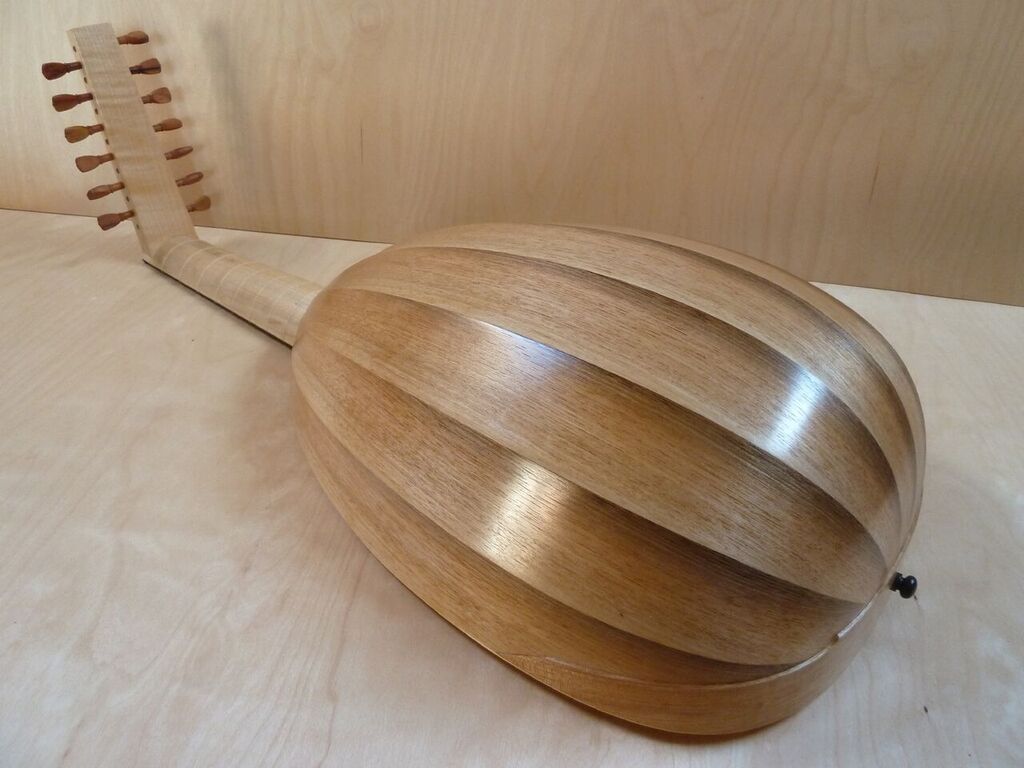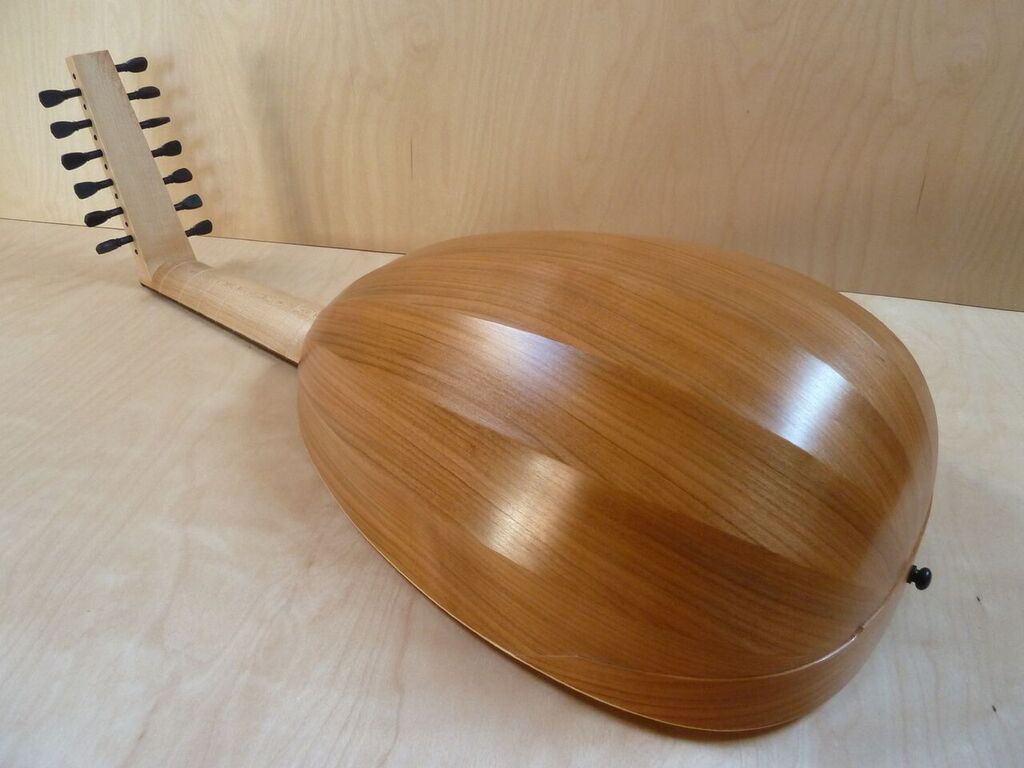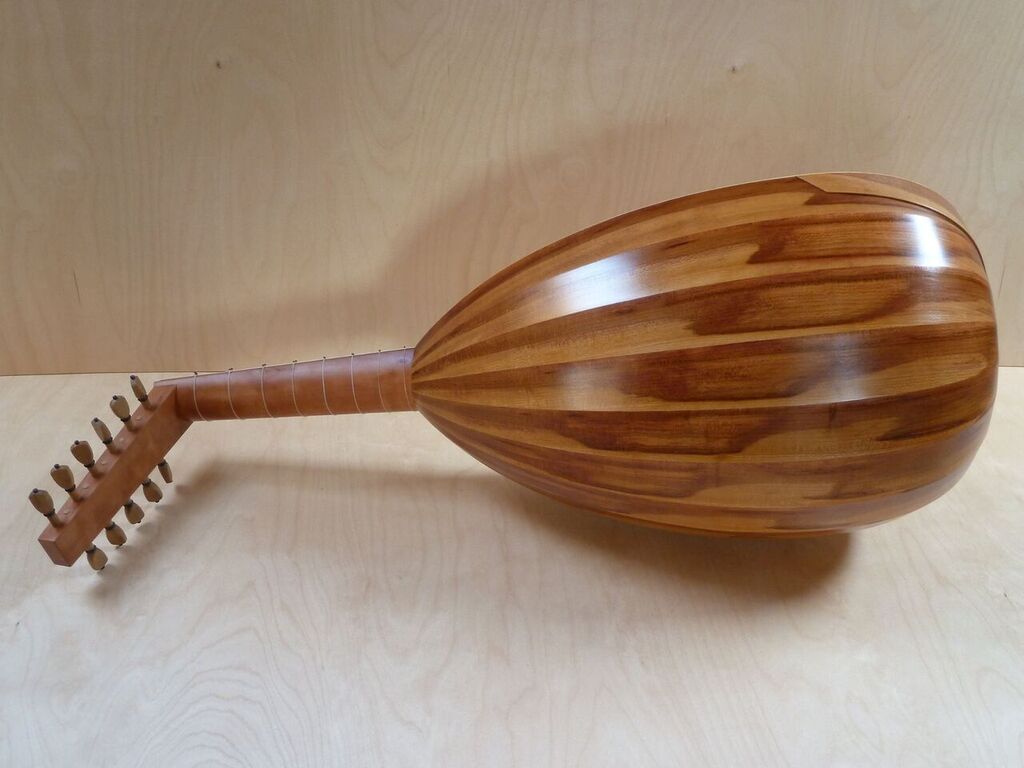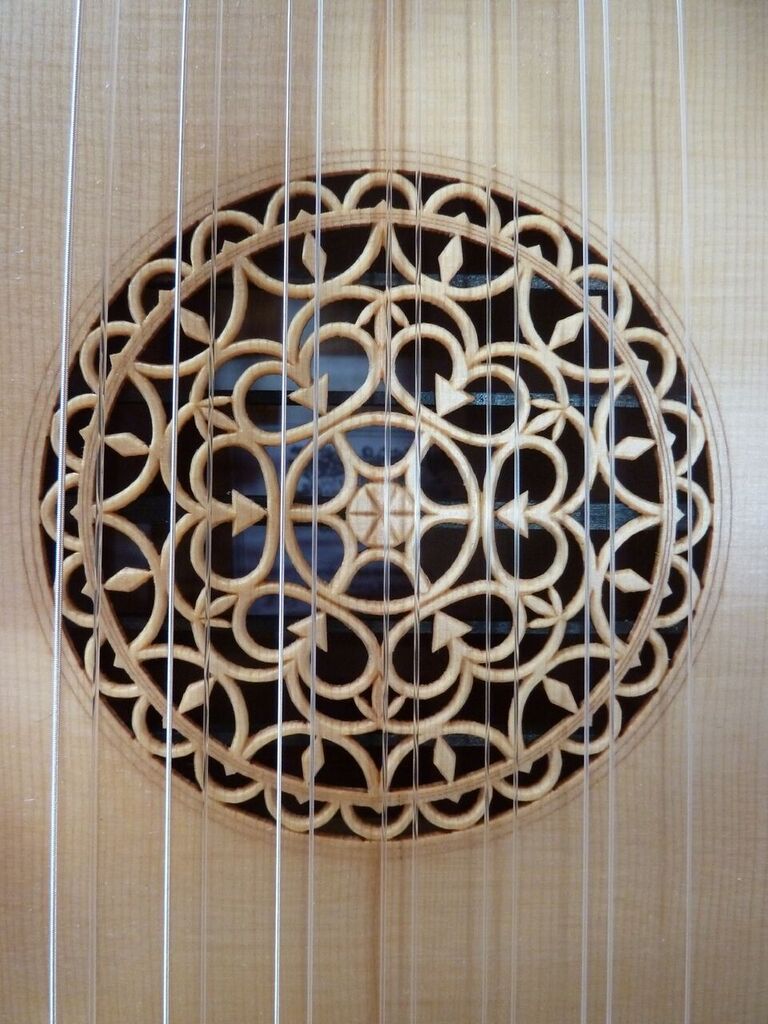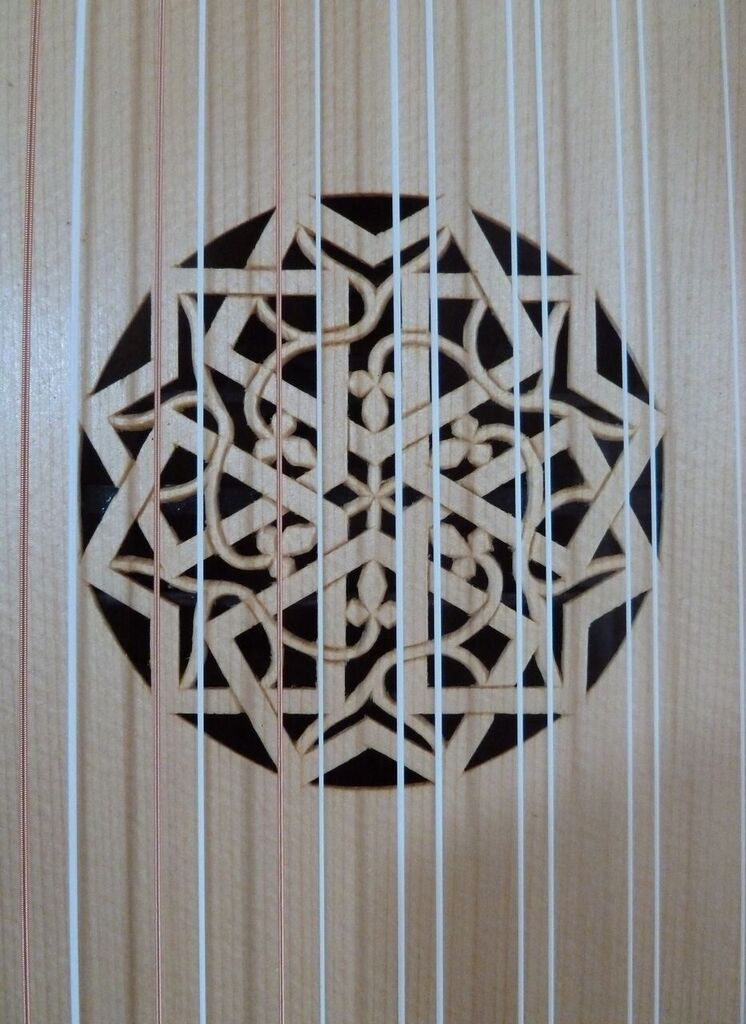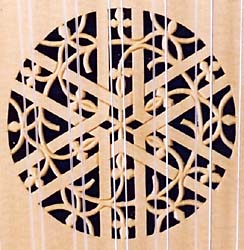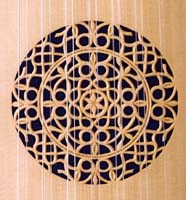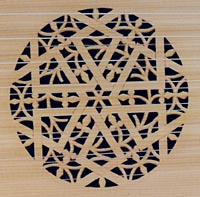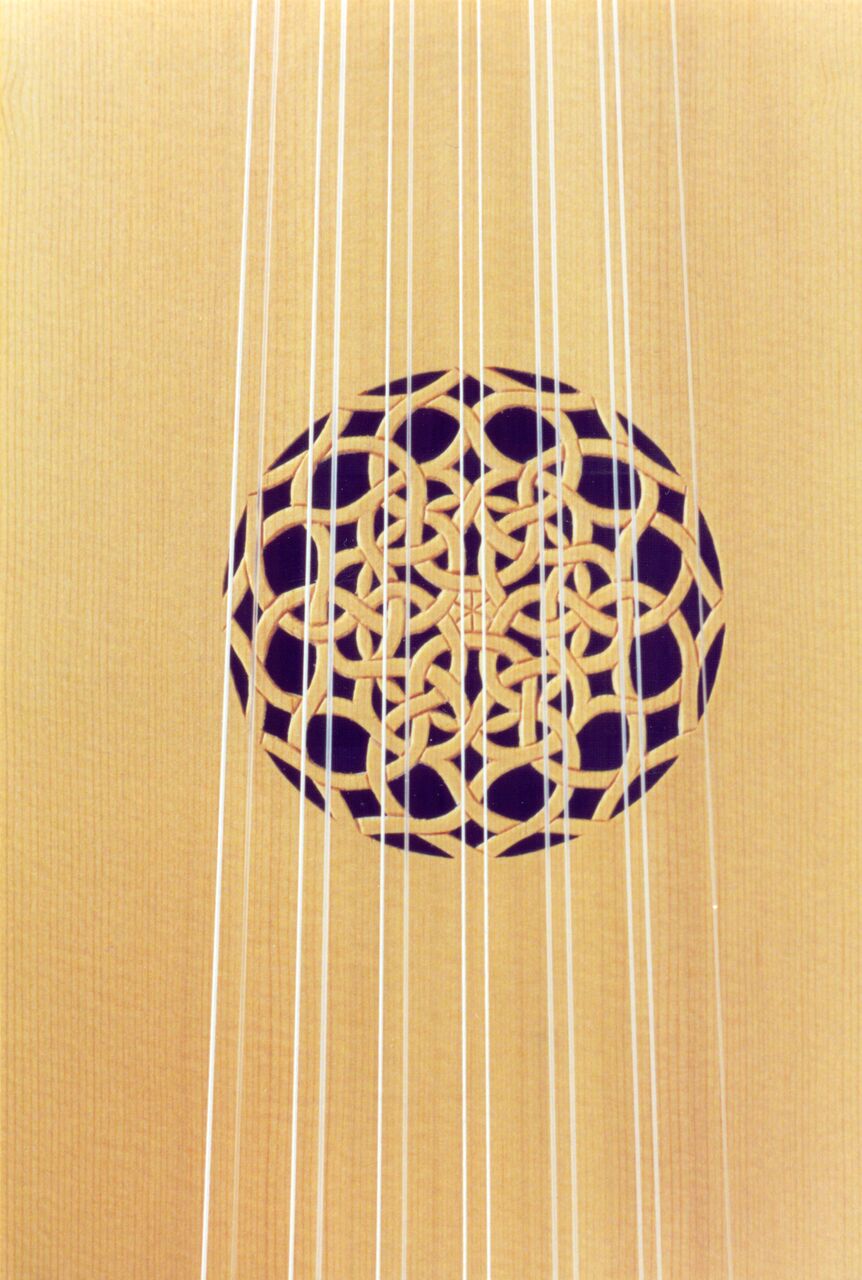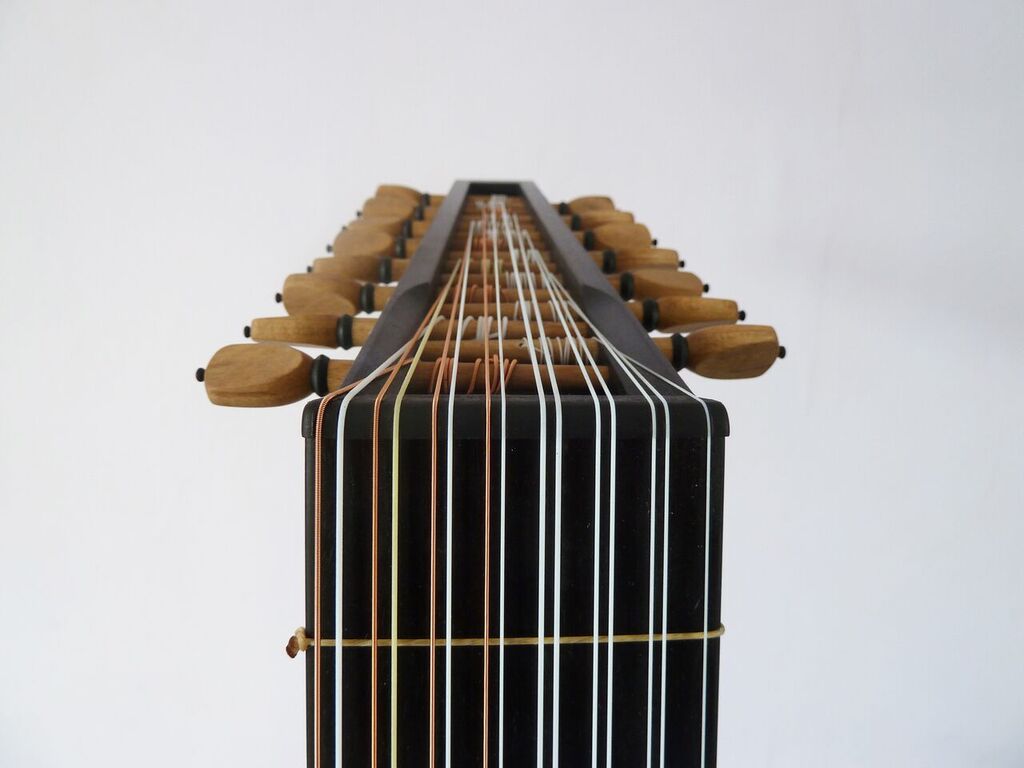
Any lute made by me typically contains 6-8 different types of wood. This has a direct and beneficial influence on the balance and functionality of the instrument and is intended also to be visually pleasing Typical Renaissance lute tuning is G,c,f,a,d',g' or the same intervals converted to different pitches across several different size variations above and below this G pitch. However, there was no definition of standard pitch during the Renaissance period and it's likely that lutes (among other stringed instruments) were built to fit individuals' hand sizes, within certain parameters of tuning and pitch as mentioned above. Many surviving original lutes were later converted to accommodate more courses of strings to keep up with changing musical fashions and thus prolong their useful working lives. I often work in a similar manner and might mix and match moulds where appropriate, depending on requirements within a desired historical context. Please see a variety of examples below.
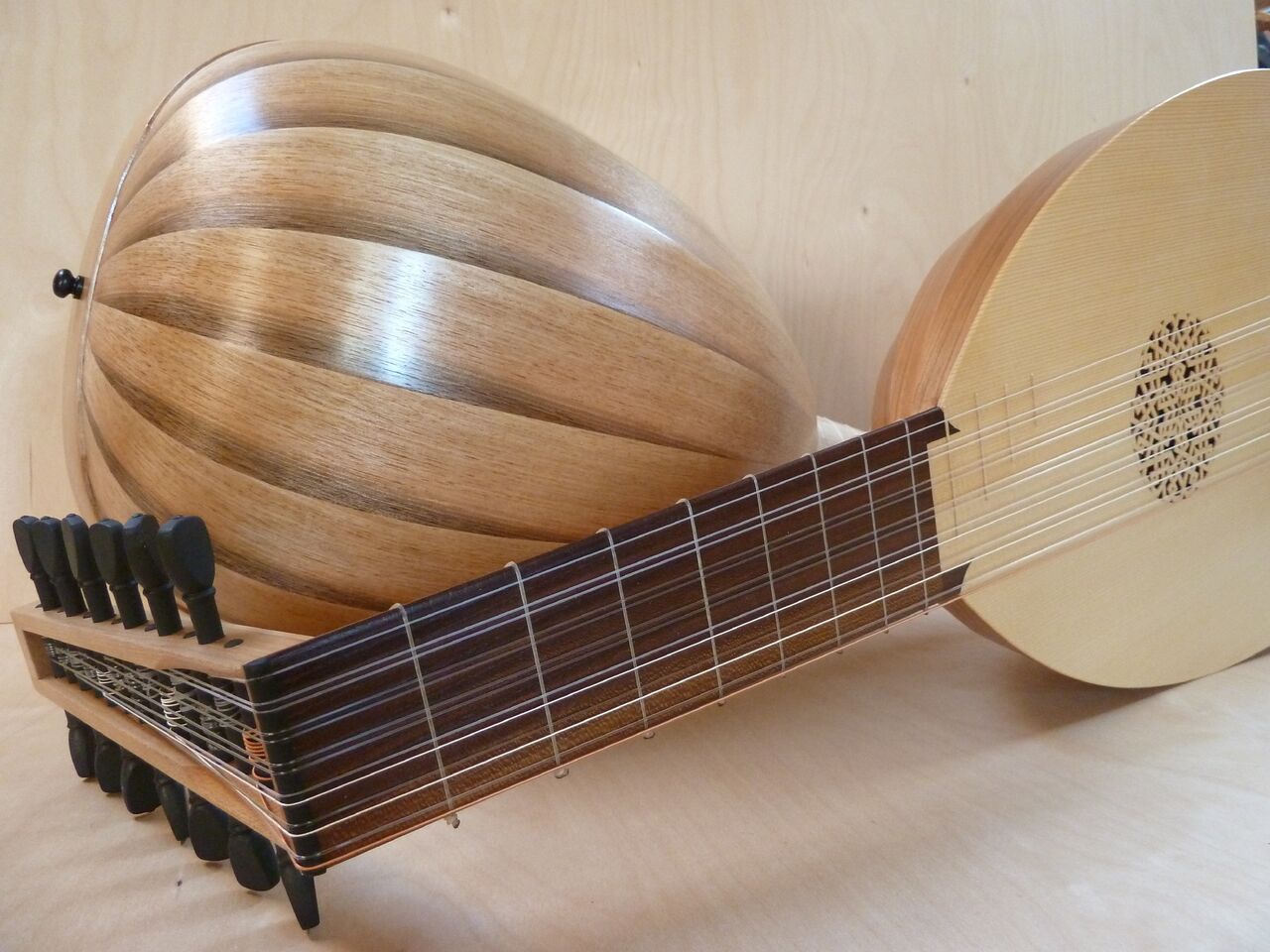
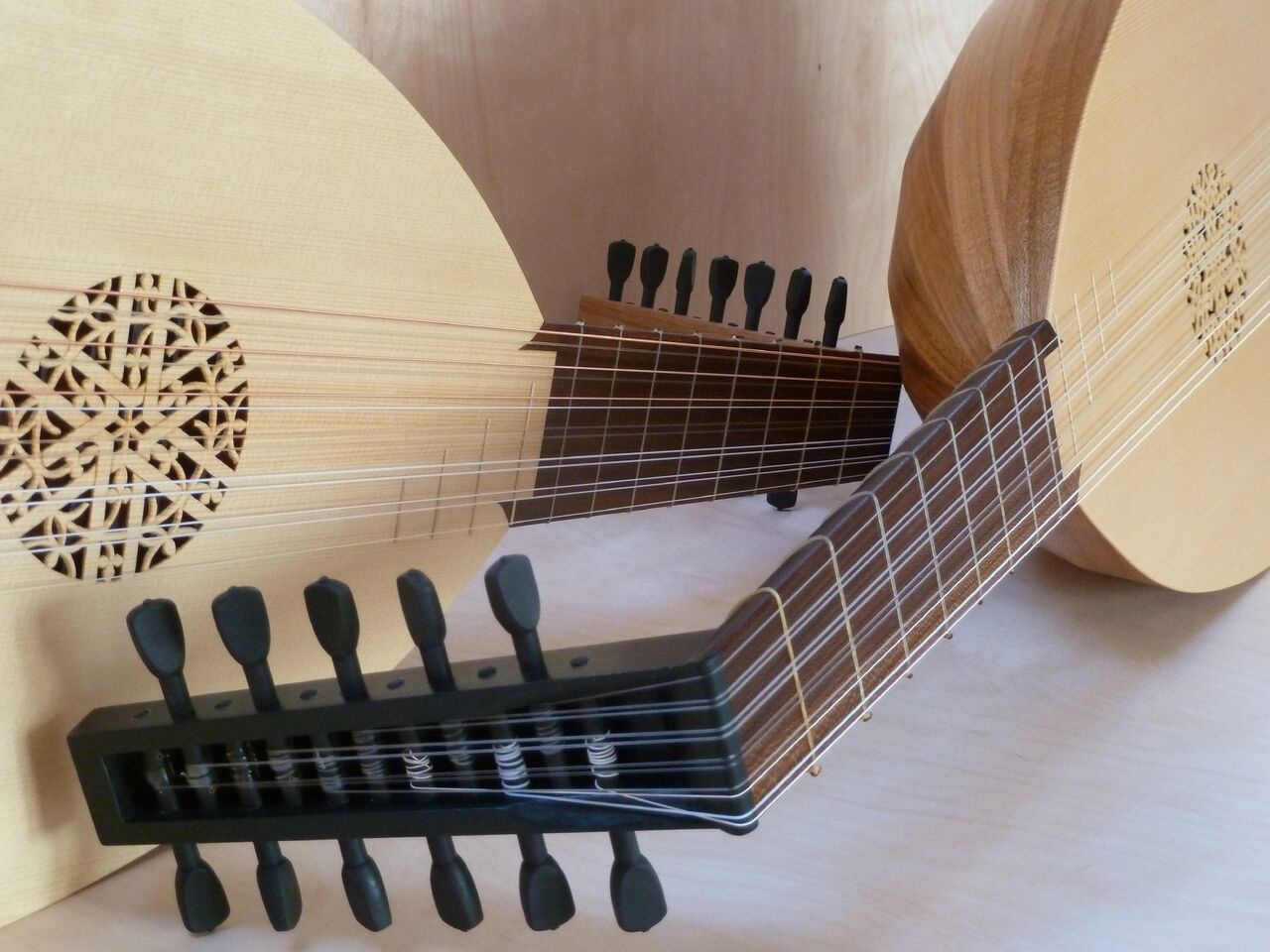
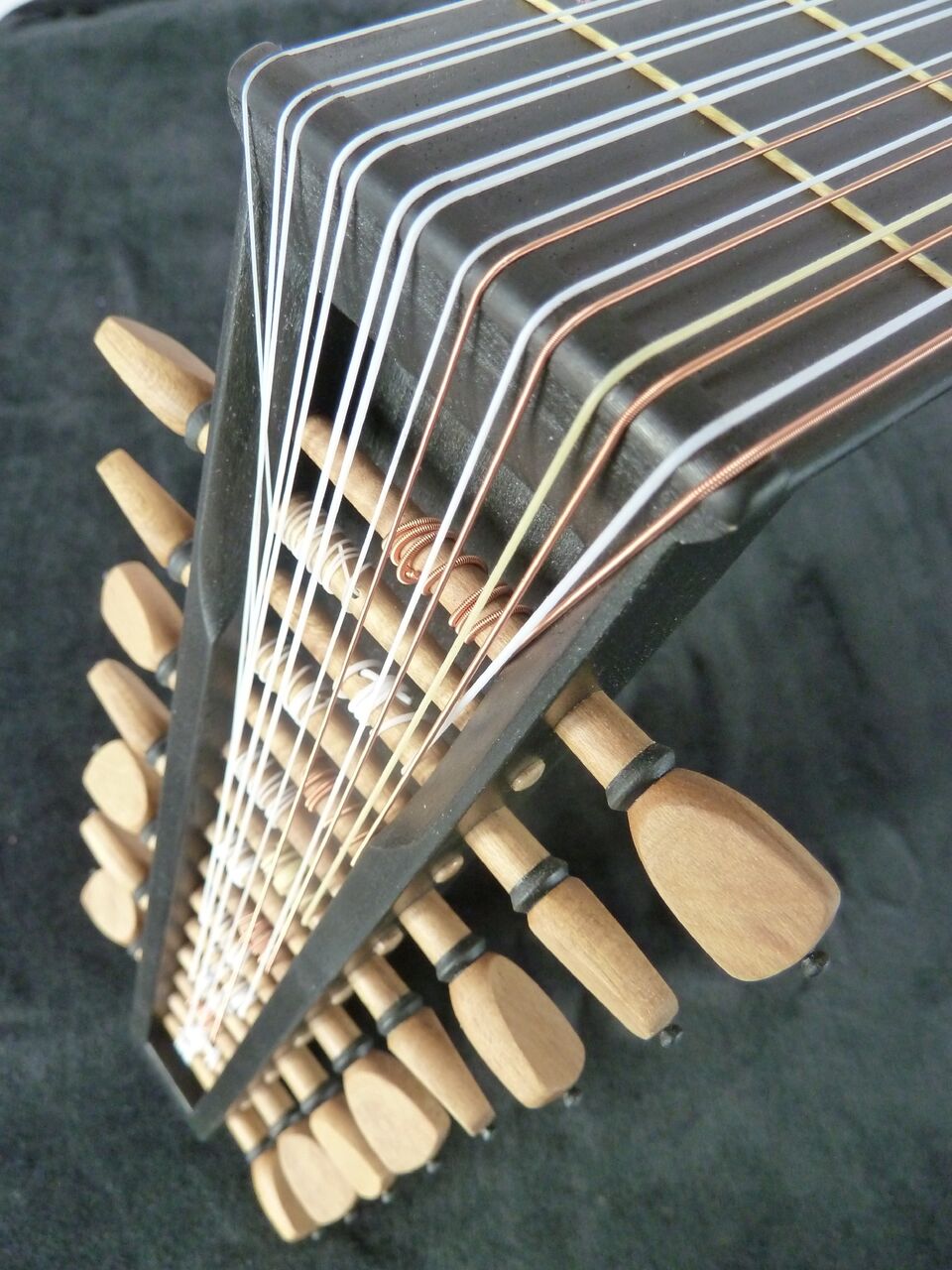
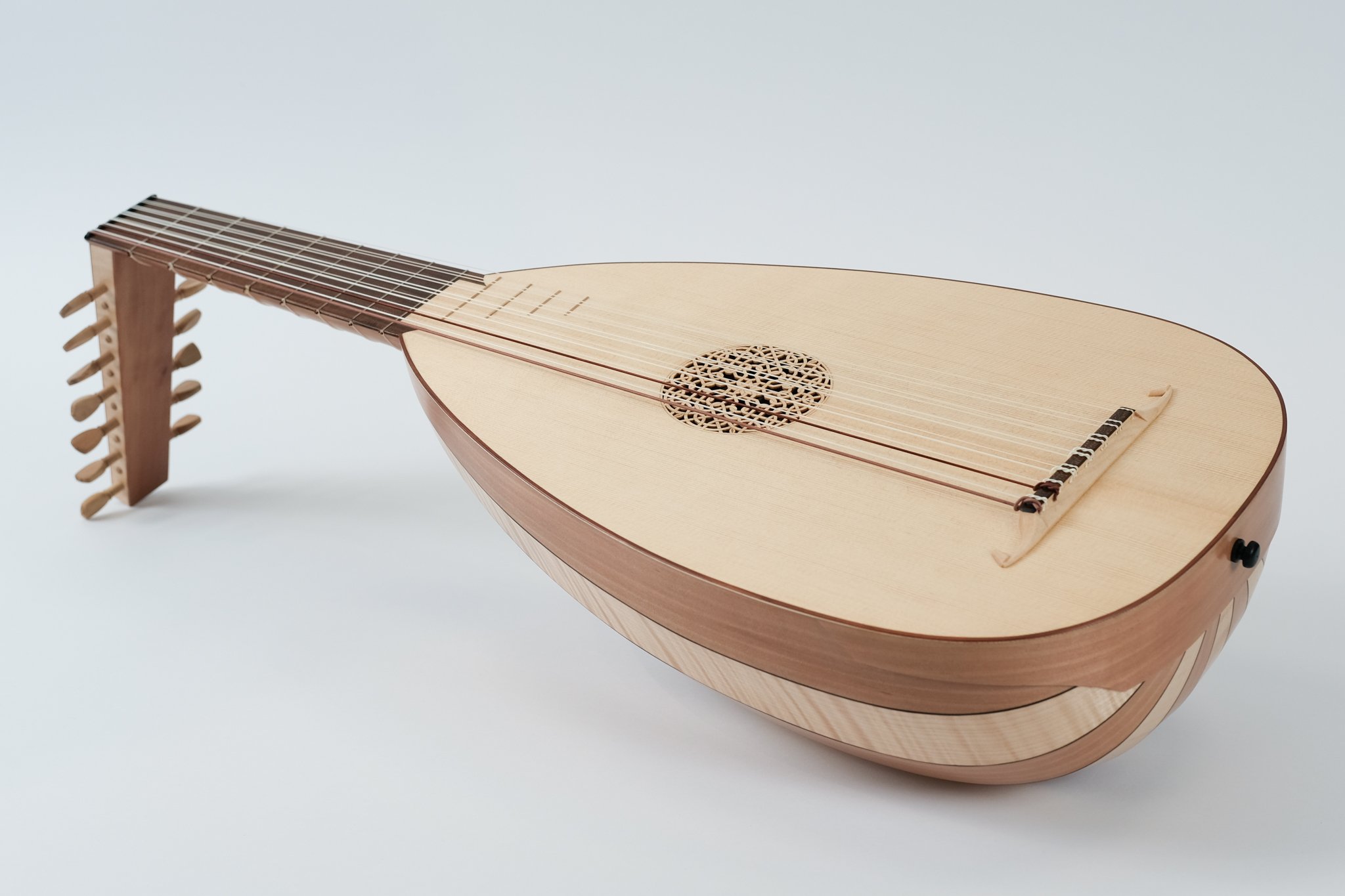
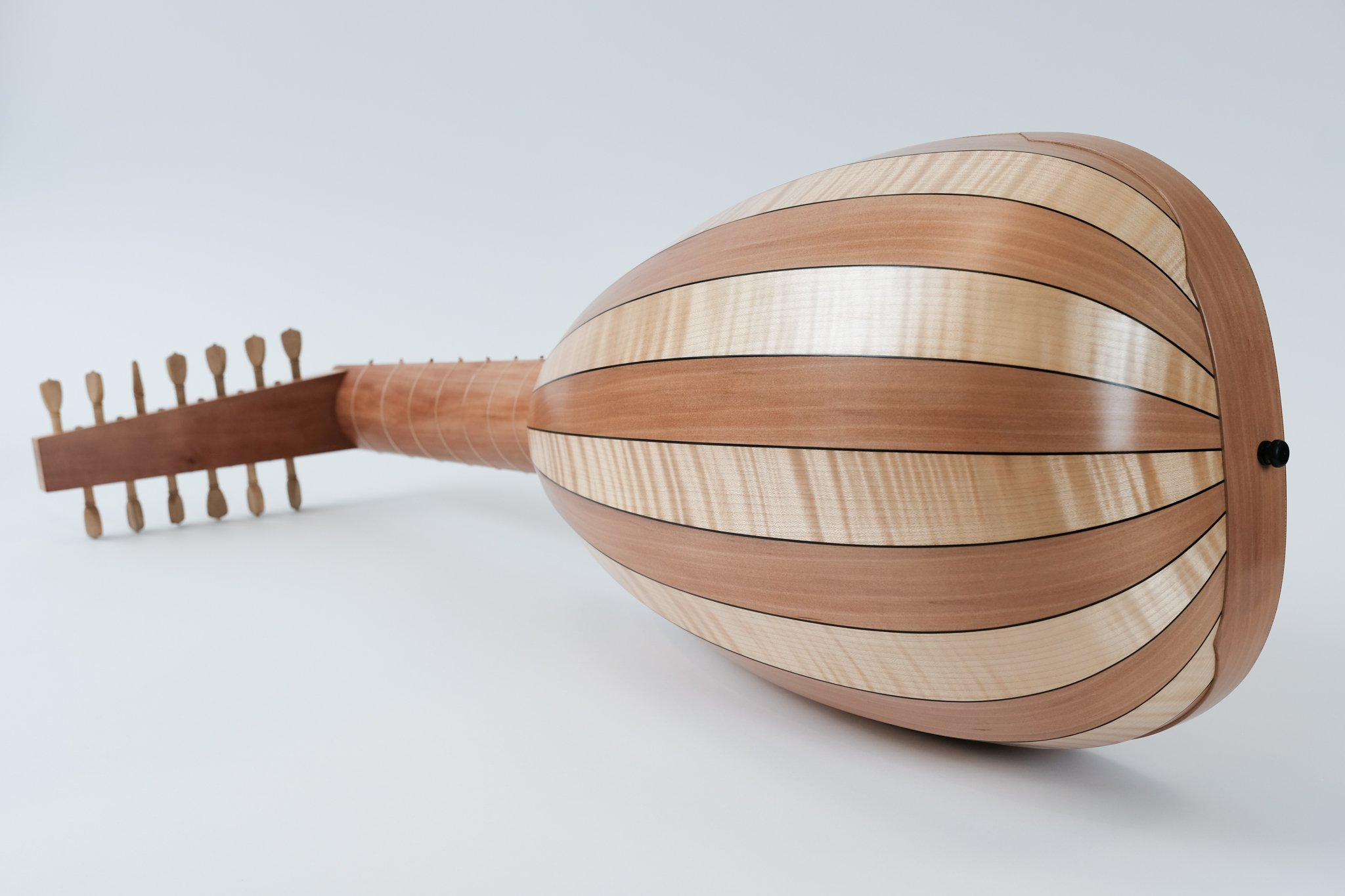
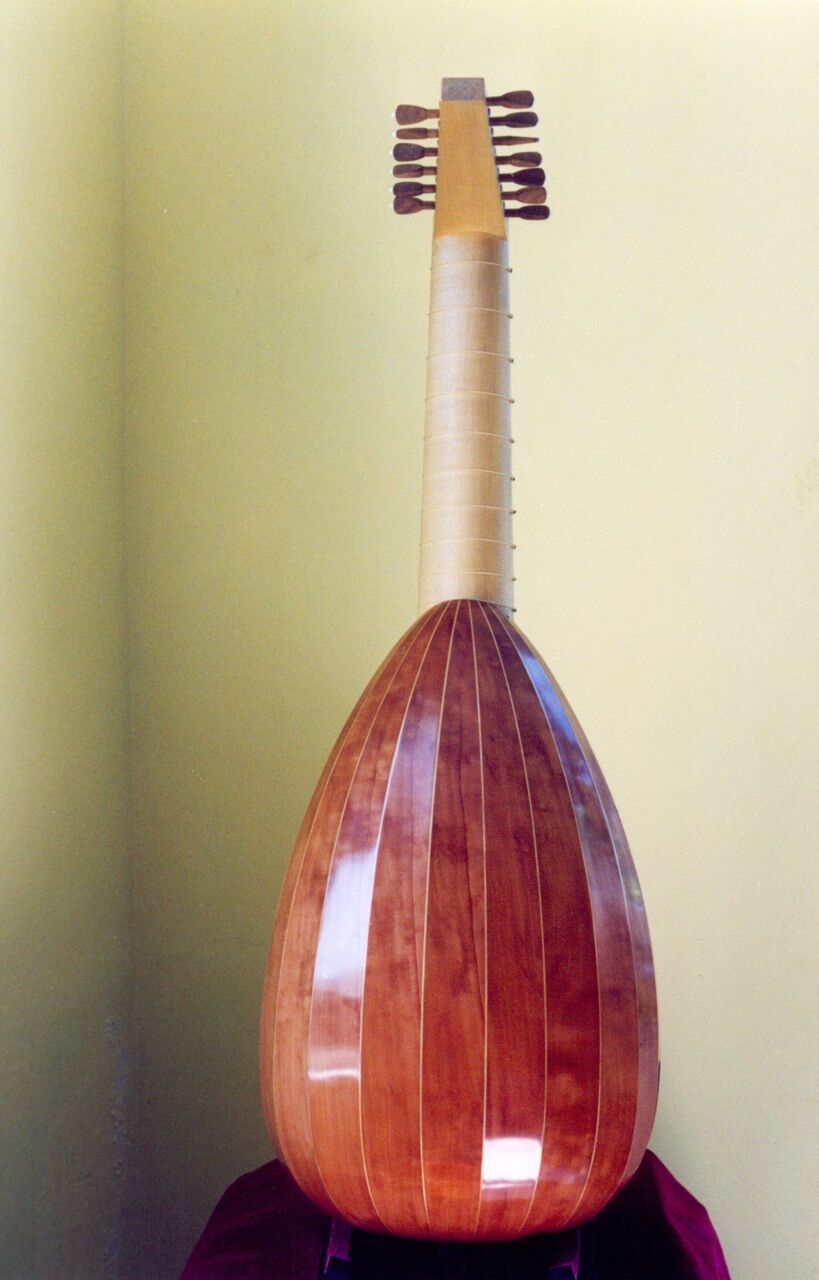
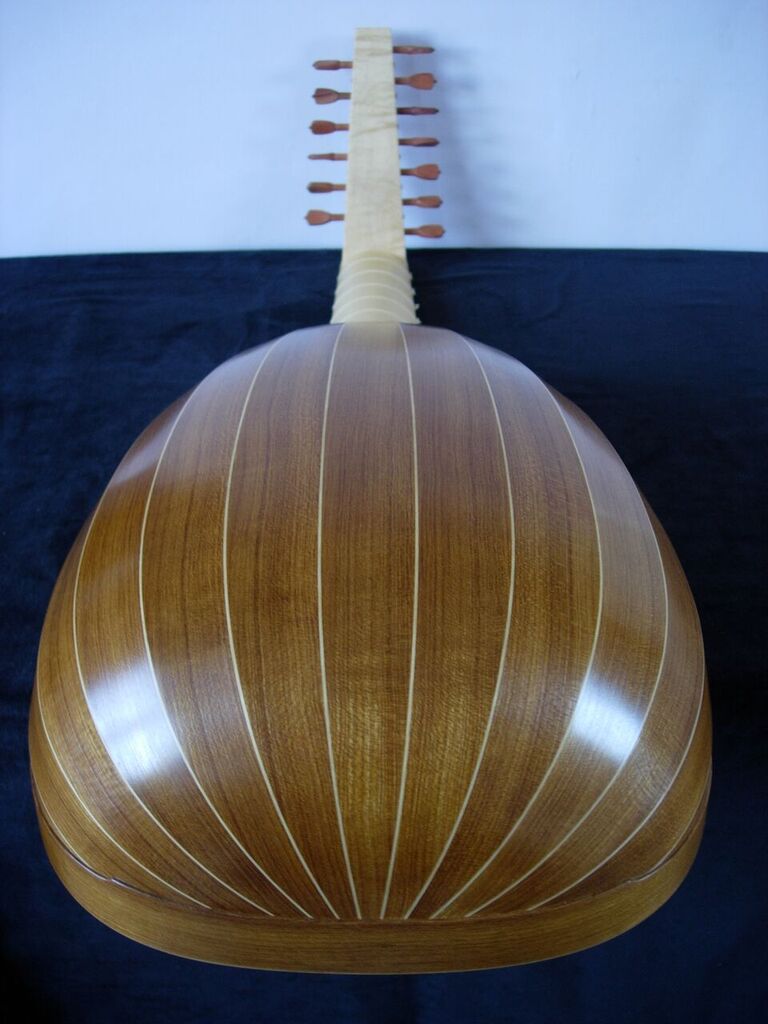
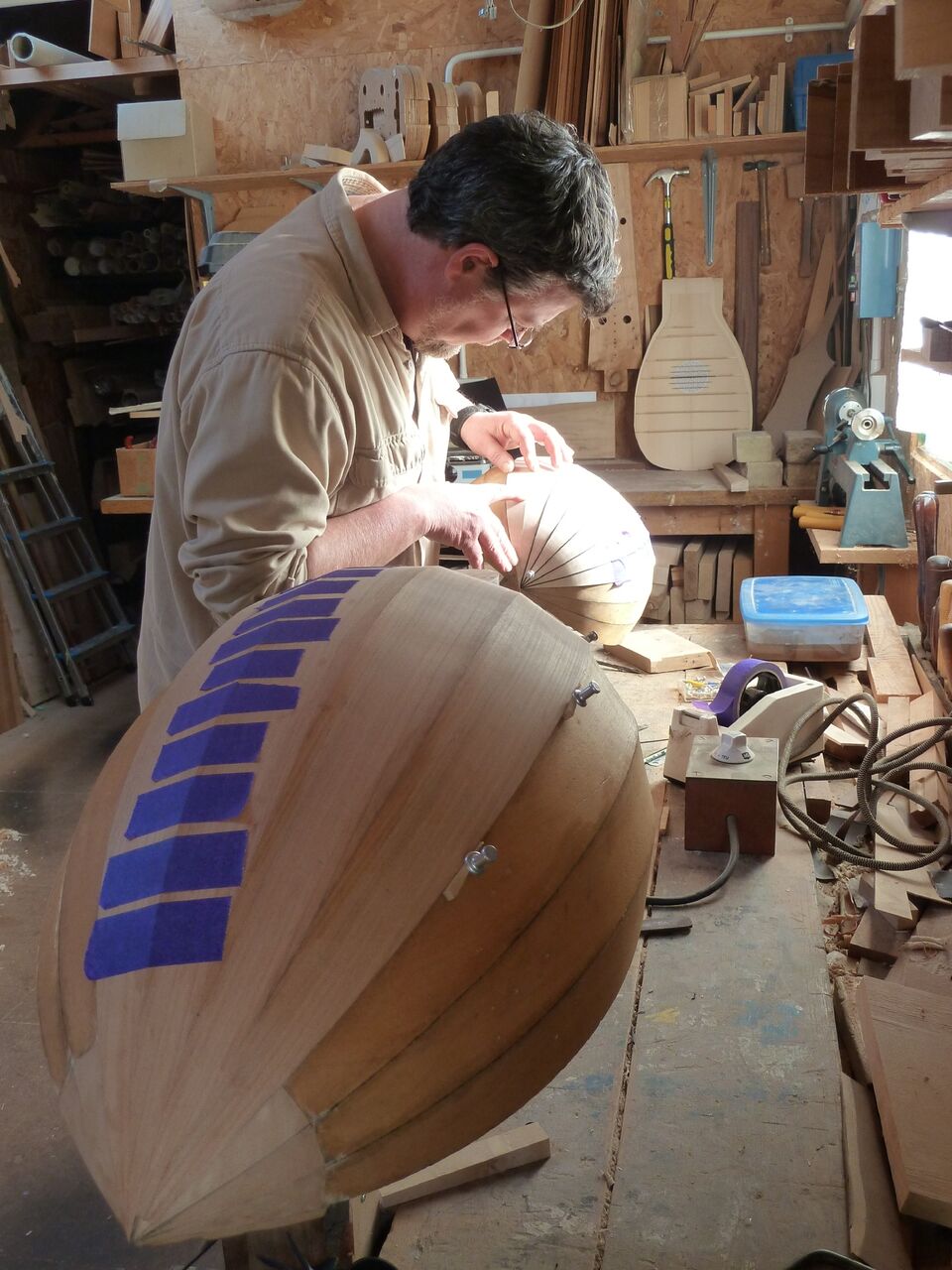
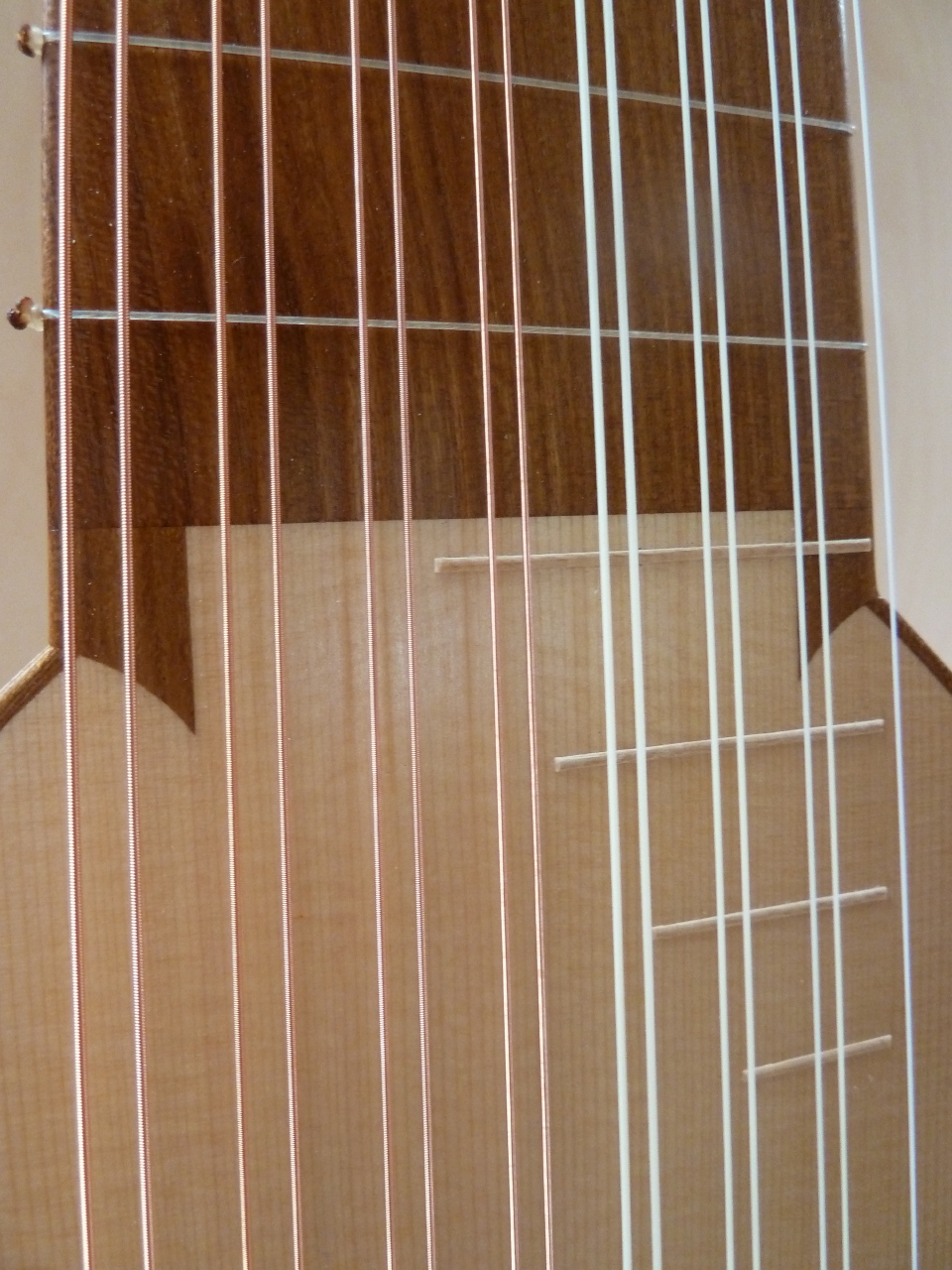
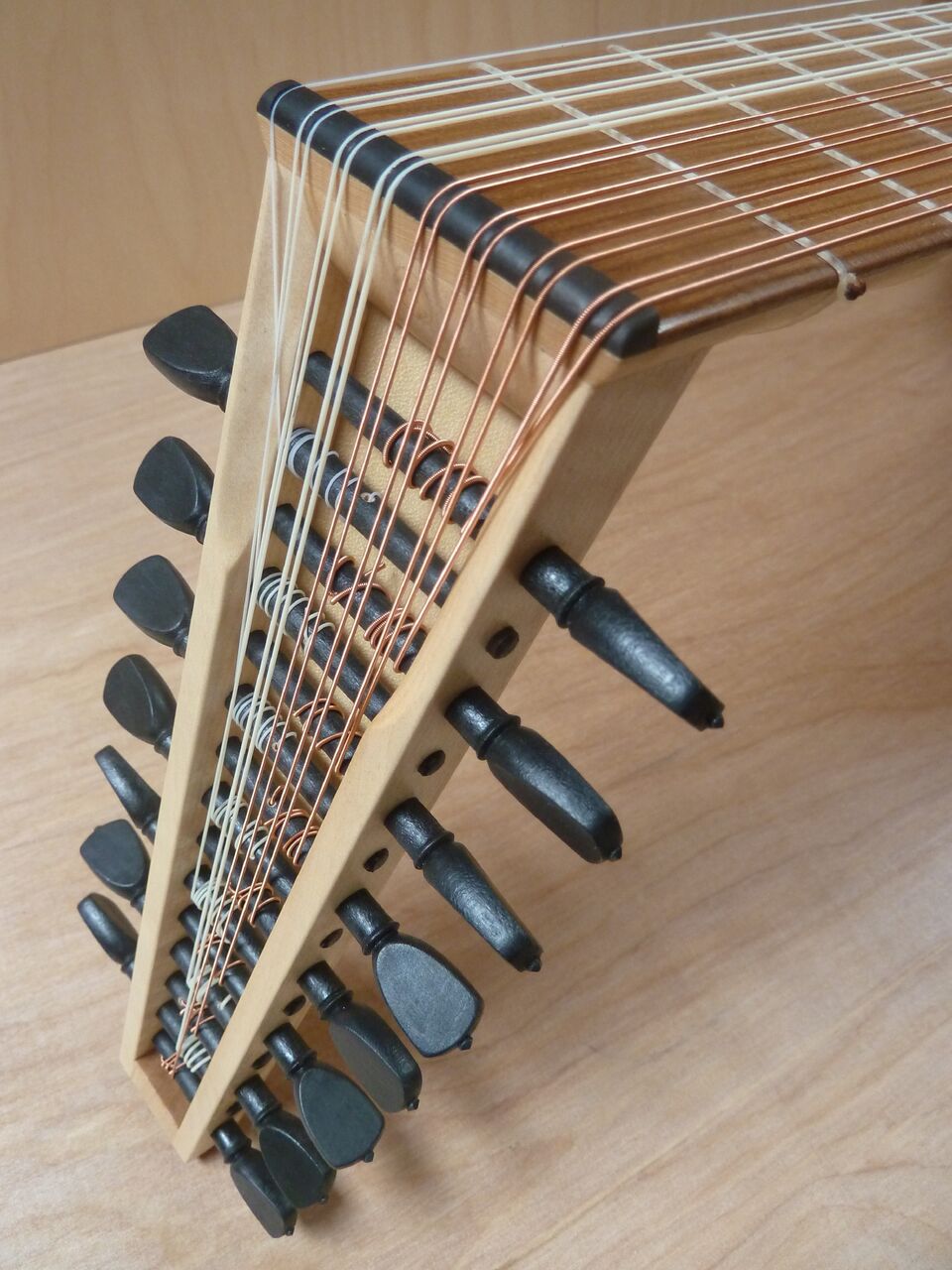

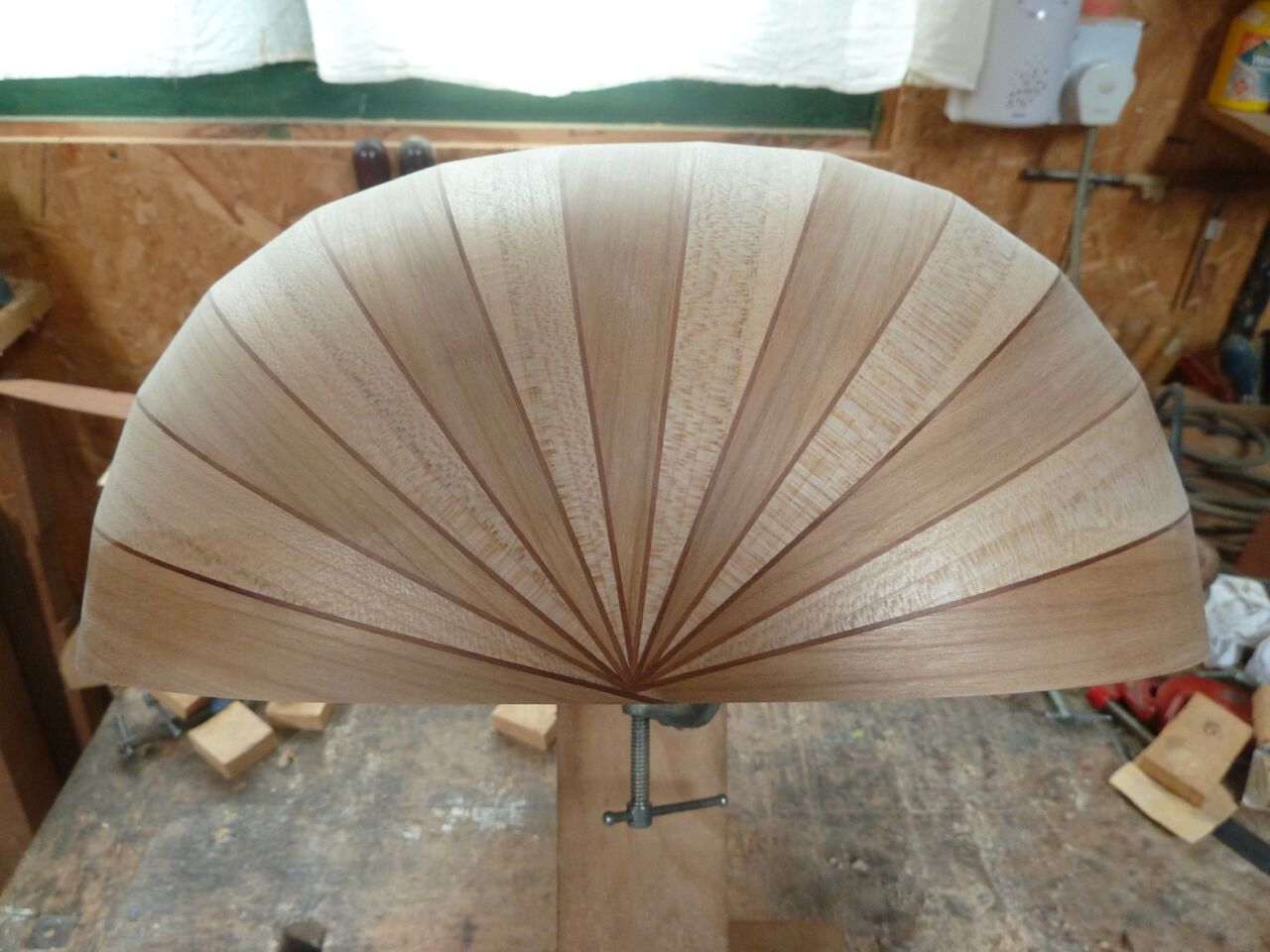
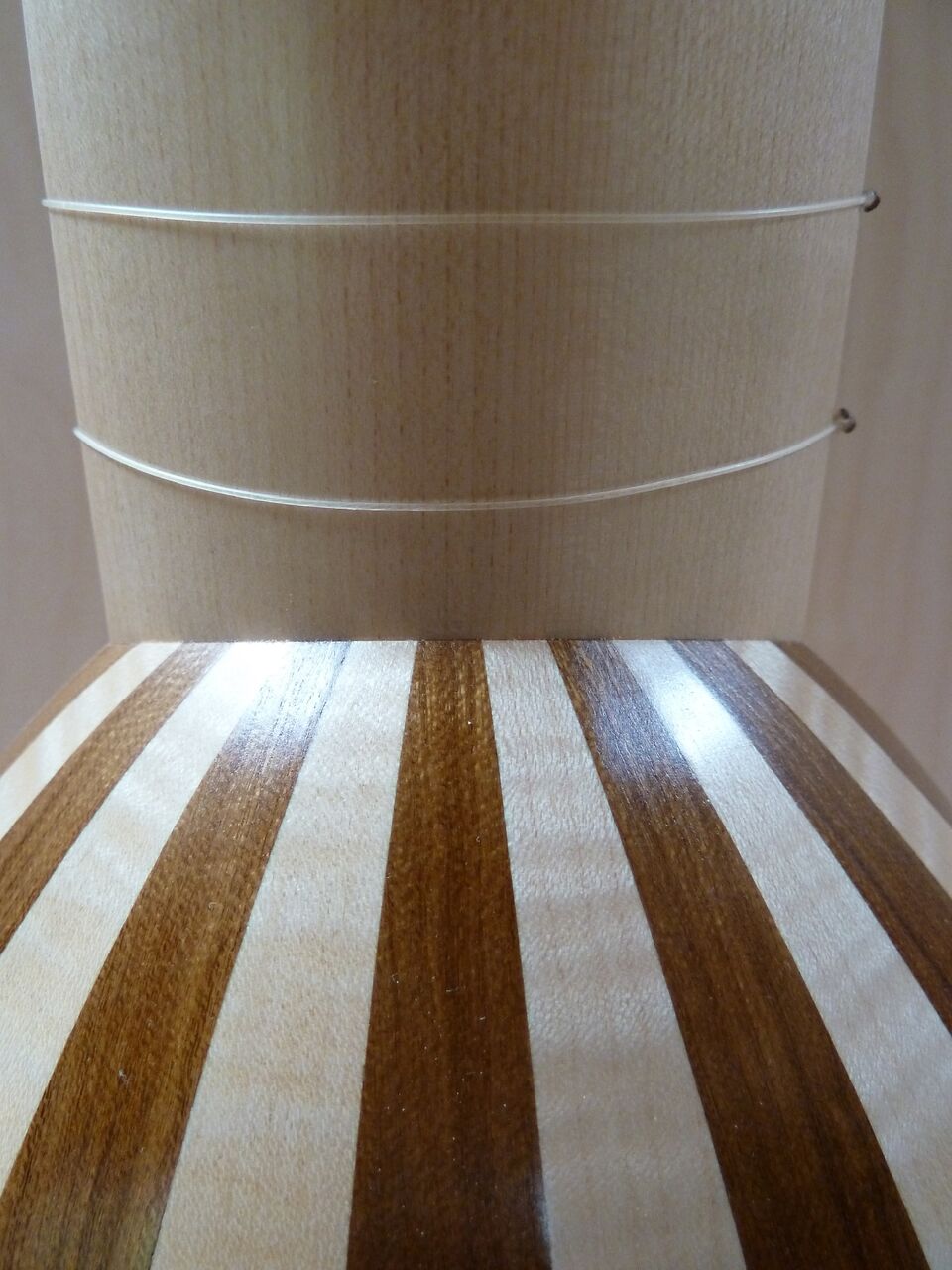
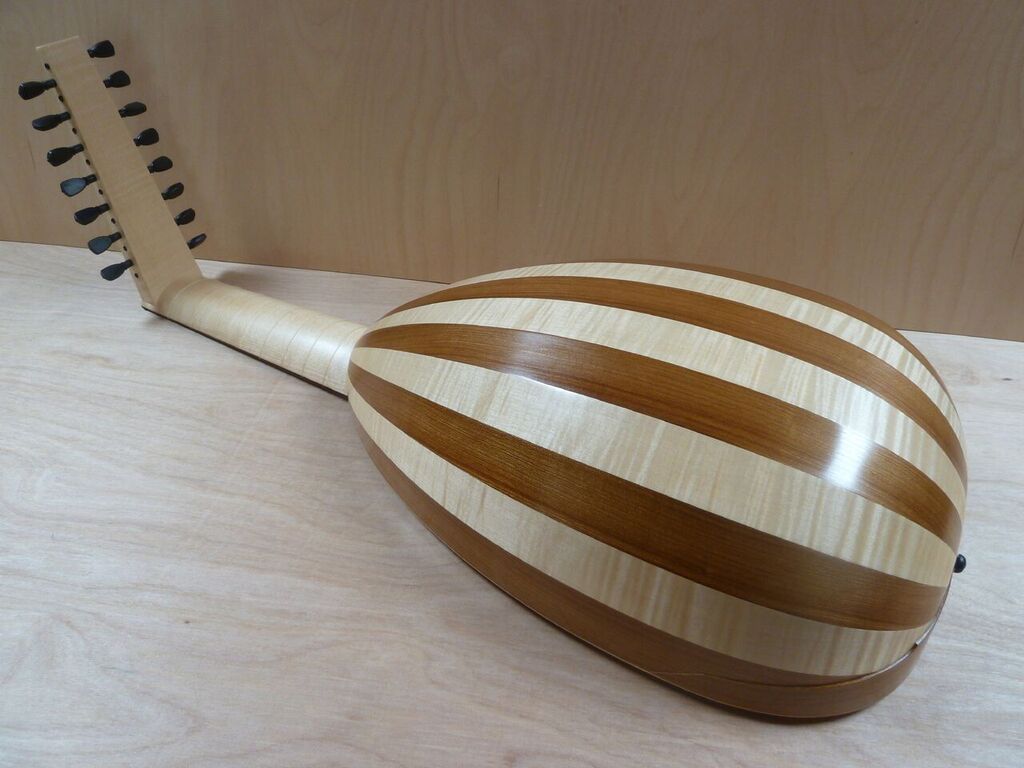
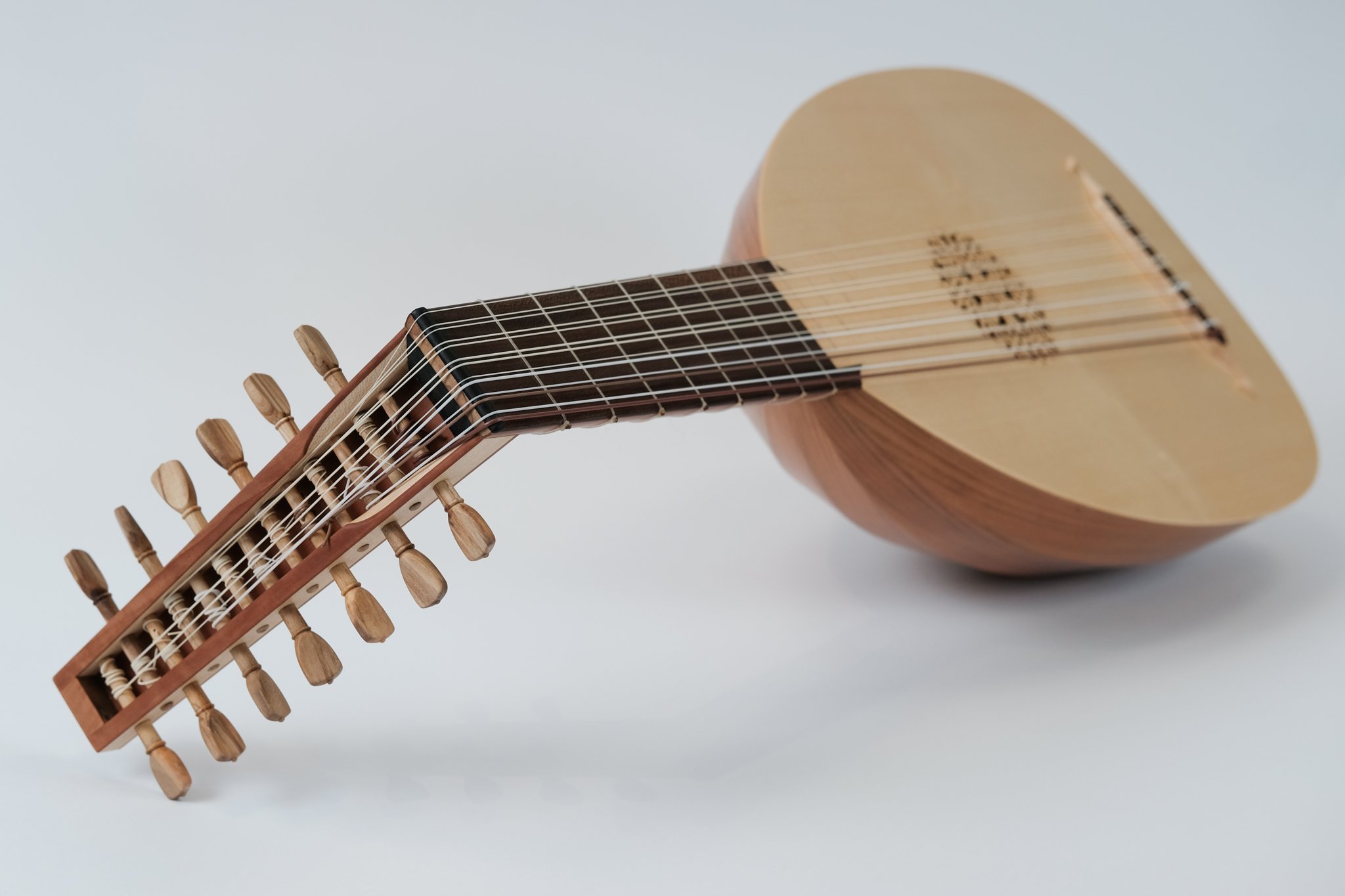
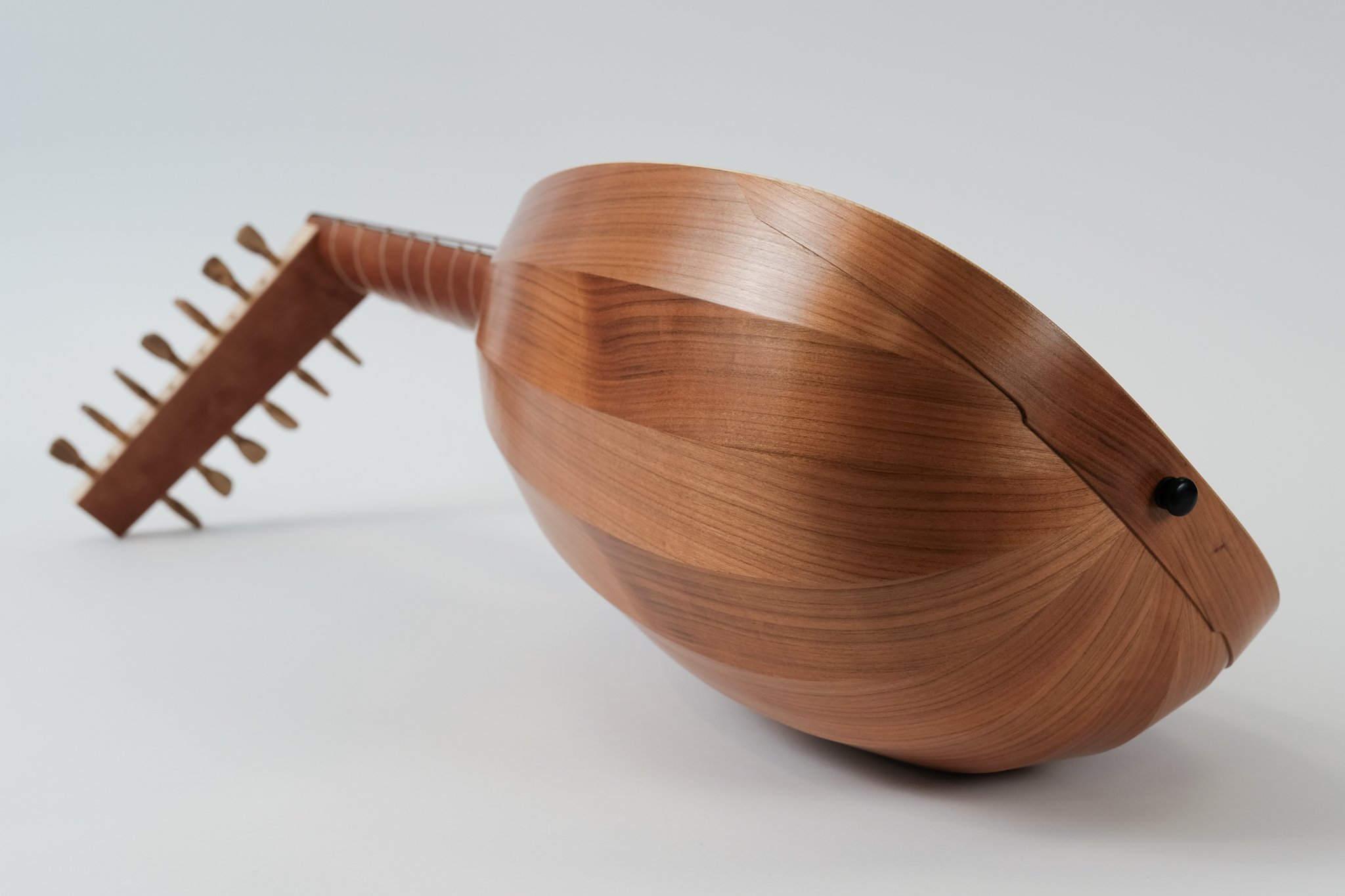
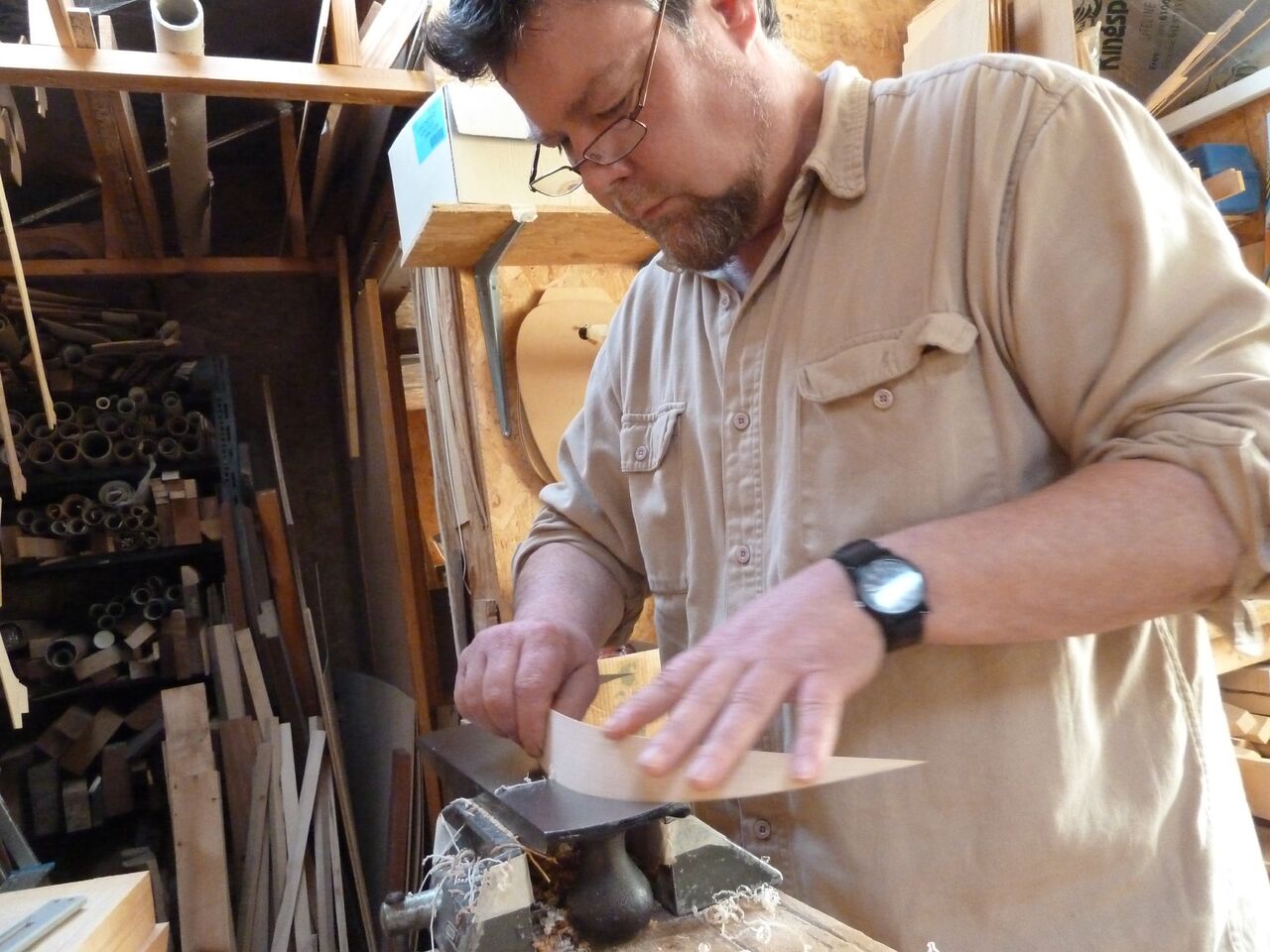
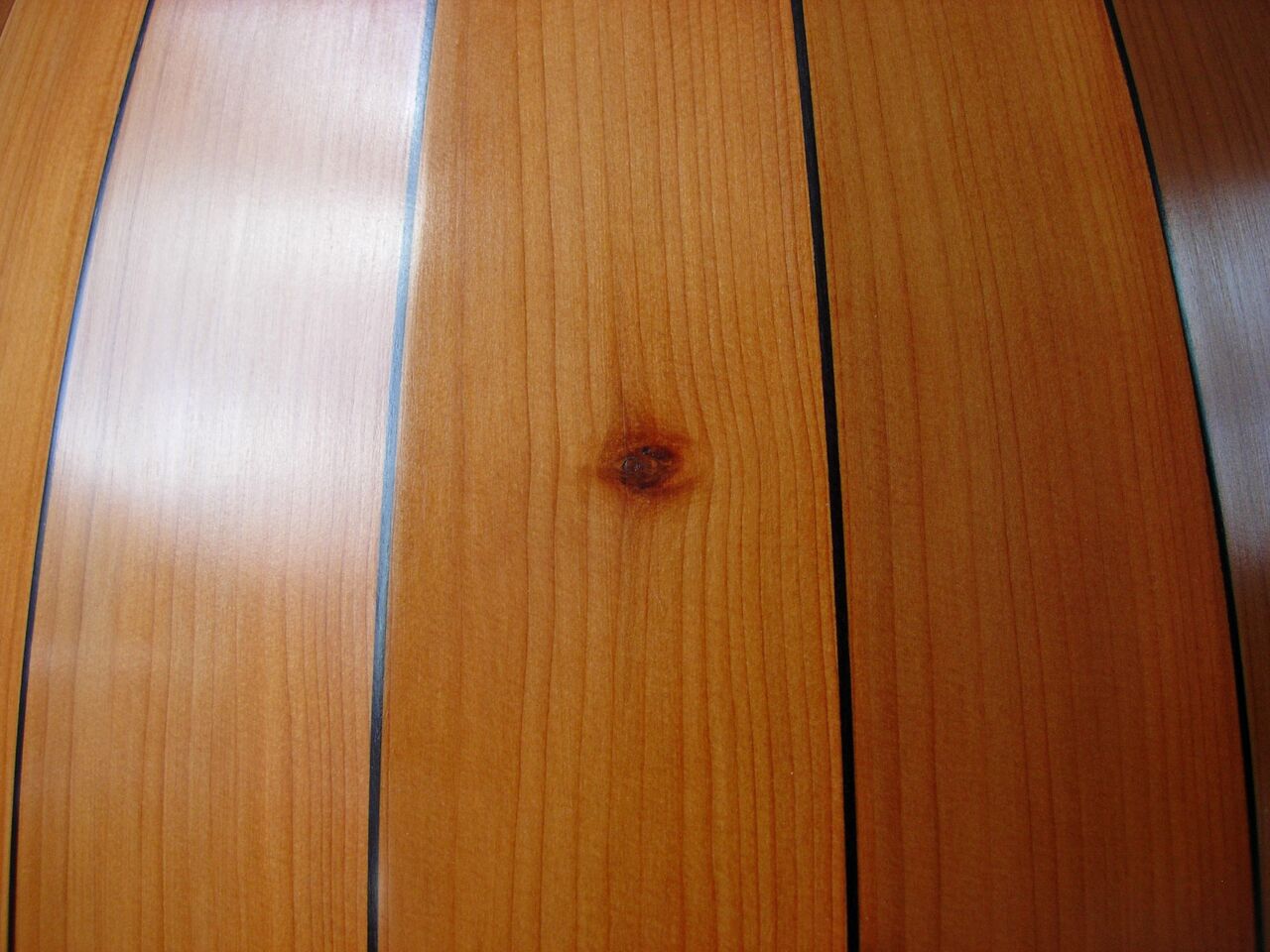
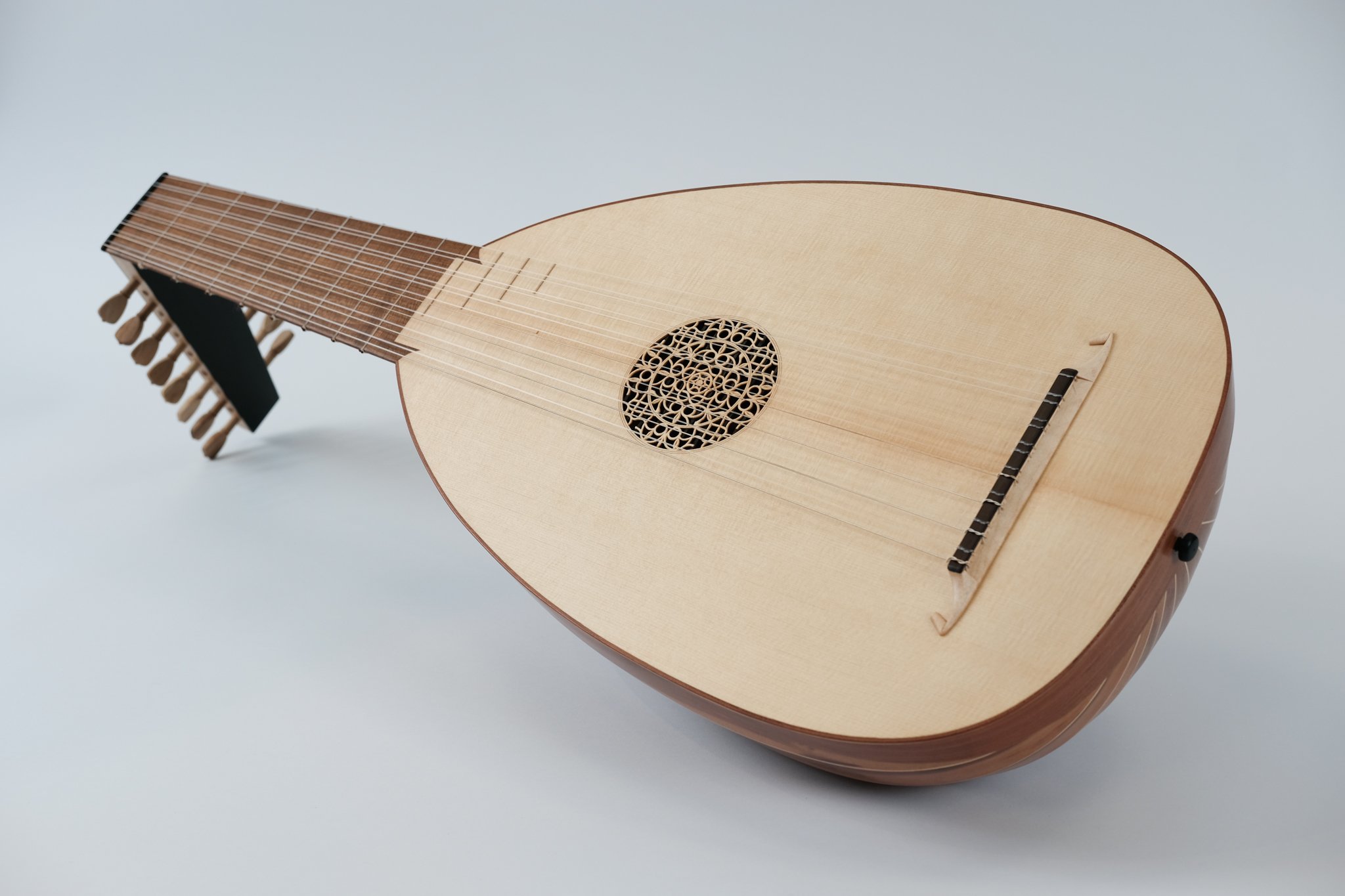
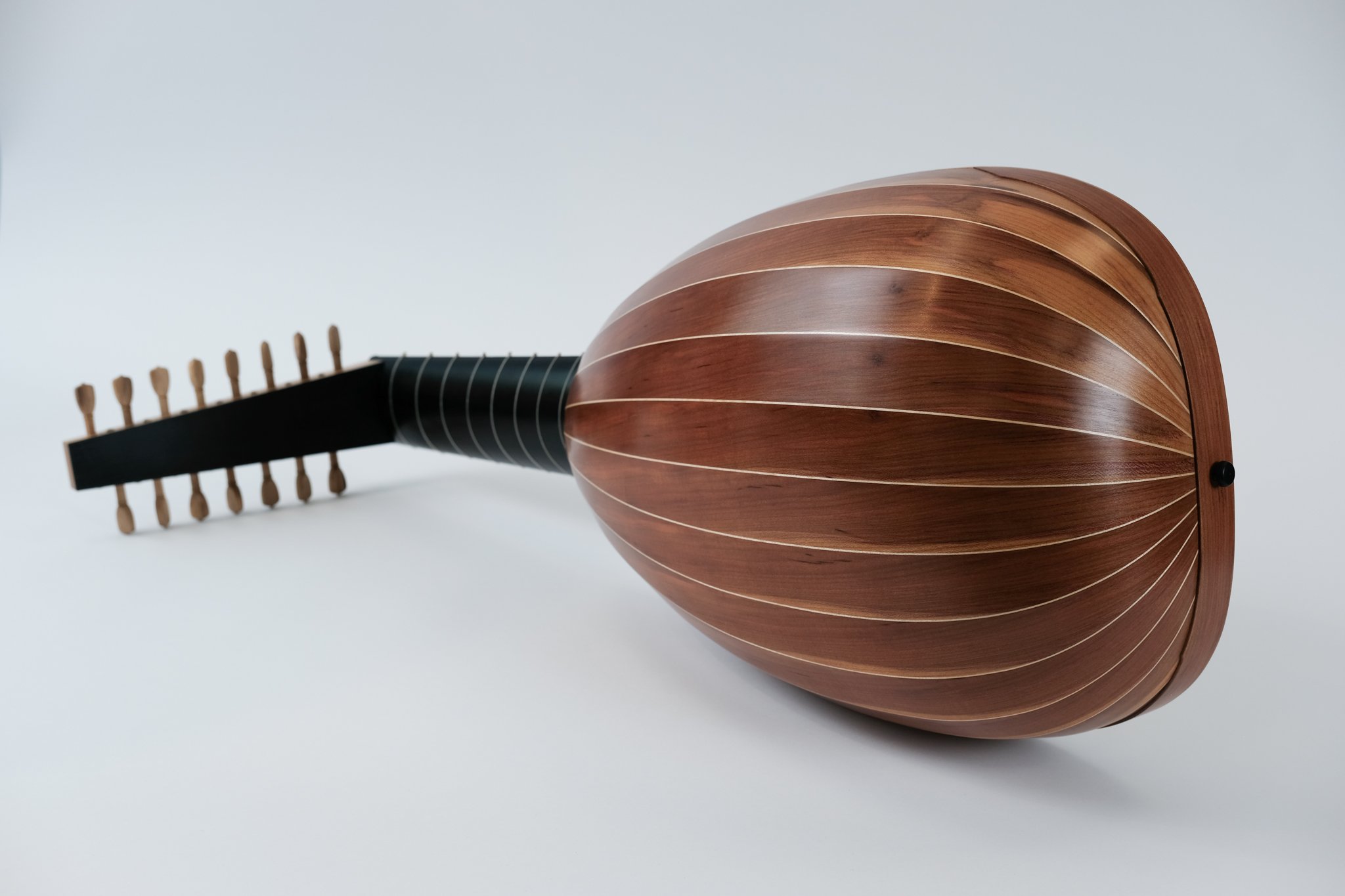
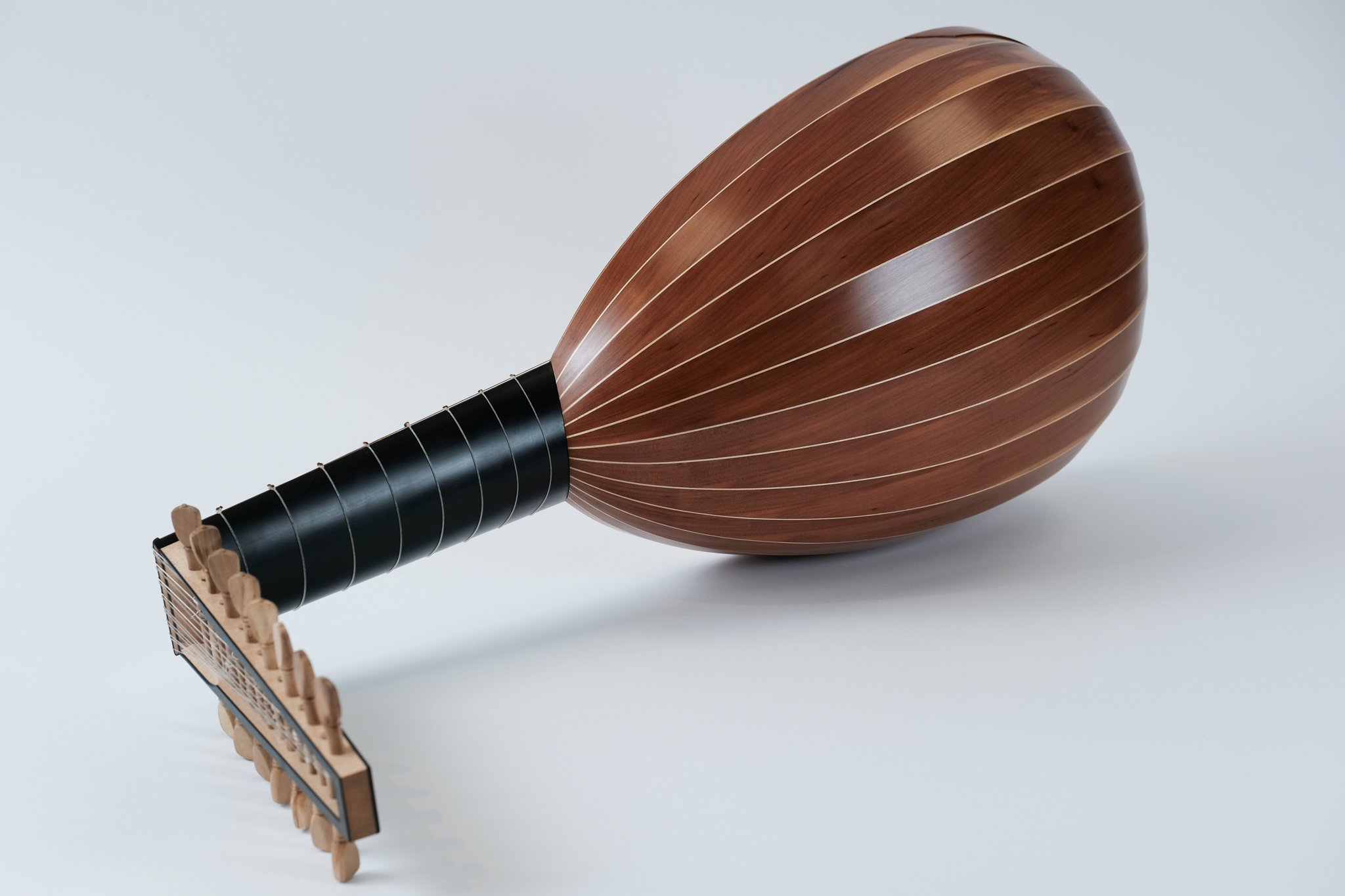
Over the years I too have found that great advantage can be had by an individual player if a lute is bespoke made to suit their particular hand size regarding the neck width and the spacing of the strings at both the nut and the bridge. This can be the difference between one that feels right for the player and one that does not and is particularly relevant to lutes of 6 and 7 courses as there is quite a large variation possible due to them having relatively few courses to fill up the physical playing area towards the bridge.

Wood selection
The images below show some of the woods from previous projects. Yew, figured pear and laburnum are also shown in the images above. Please note - while I generally have quite an extensive choice of woods I cannot guarantee that all these examples shown will be available at all times. Some types are rare or one offs and may attract a premium.
Roses and decorative additions
All of my lutes are offered with sound hole decoration (rose) as standard. Standard necks and pegboxes will usually be made in sycamore or similar. Some examples of the more popular extras for lutes include: fingerboard points, inlaid heart, half edging, separator lines between ribs, black stained neck and pegbox, neck and pegbox veneering. Many of these are pictured on this page, otherwise see also Carvings and Decorations page.
Approximate lute periods
| 5 Course | Late Medieval | From £3,700 |
| 6 Course | From 15th-16th Century | From £3,900 |
| 7-10 Course | From Mid 16th Century | From £4,100 |
| Theorbo etc | From Late 16th Century | From £8,500 |
| 11 Course | 17th-Mid 18th Century | From £5,700 |
| 13 Course | 18th Century | From £7,100 |
Sound sample
